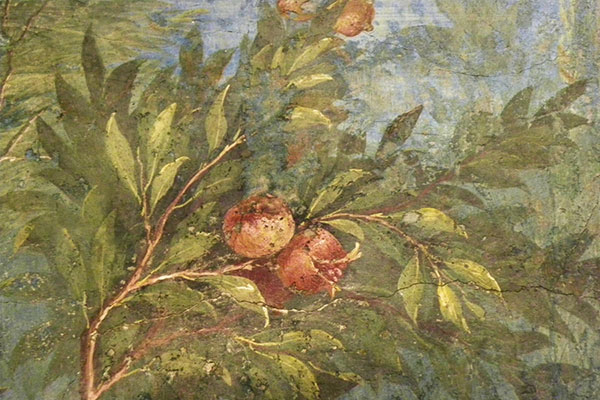In fact, it was planted in patrician homes and during wedding celebrations, hazel branches were used to decorate rooms and hazelnuts were offered during banquets. Many frescoes or decorations on pottery depict wedding scenes decorated with intertwined hazel branches.
This plant was associated with the god Hermes, Mercury for the Greeks, the winged messenger god of the gods, the only deity capable of passing between the three kingdoms: Olympus, the Land of Men and Hades. God of the arts, poetry, literature, travel, being associated with speed of thought and communication, Hermes, is often depicted holding a hazel branch tied with two ribbons. The ribbons in time became snakes and Mercury became the deity of medicine. Even today, his branch with the two intertwined snakes is a symbol of the medical disciplines.
The hazel is also mentioned in the Bible when, in ch.7-9.20, it is narrated that Moses used a hazel branch to inflict the seven plagues on the Egyptians, and to break through the waters of the Red Sea.
In many other cultures, the hazel tree is of notable importance; for the Celts, for example, it was the wood from which the Druids made their staffs, and their calendar included the hazel month as the ninth month, which roughly corresponds to the period between early August and early September.
The hazelnut tree has therefore been known for thousands of years and has always been associated with wisdom, divination, and poetry. Its presence in the most important rites of passage has always symbolised fertility, wealth, wisdom, knowledge, protection and rebirth.
According to tradition, it is naturally attracted to water; in fact, it seems that dowsers use a hazel twig to search for water underground. The very name "dowsers" comes from the Greek "rhábdos", meaning "rod" and "mantéia",meaning "divination". The hazel twig would be used in an almost magical way as it would resonate with the waves emitted by the radiation of metal nodes in the earth, influenced by the nearby presence of water.
The practice of searching for water veins involves choosing a branch with a fork and grasping it at both ends of the forked branch, taking care not to grip it too tightly. Moving slowly towards the point where water is supposed to be present, the rod would rotate towards the ground, as if attracted by it.
The charm of the hazelnut can also be found in fairy tales: in the Cinderella tale, when the father remarried after the death of the mother, and took her to live with her stepmother and stepsisters. One day, the father, on his way to a nearby town, asked the girls what they would like as a gift. The little Cinderella asked for the first twig that would hit her father's hat. Her father did so, he brought her the twig, she planted it on her mother's grave and it grew into a beautiful hazel.
